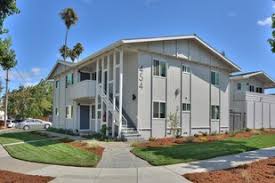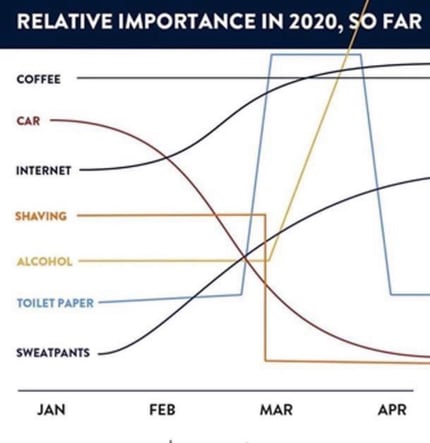 In negotiating an income property loan, the size of loan the borrower can obtain is usually more of a sticking point than the rate or the loan fee.
In negotiating an income property loan, the size of loan the borrower can obtain is usually more of a sticking point than the rate or the loan fee.
Since income property loan sizes are generally limited by the debt service coverage ratio (i.e., cash flow), rather than the loan-to-value ratio, the operating expense figure that the lender uses in his calculations is critical.

Suppose a property has the following Pro Forma Operating Statement:
ABC APARTMENTS
1234 MAIN STREET
SAN JOSE, CALIFORNIA
PRO FORMA OPERATING STATEMENT
Income:
Gross Scheduled Rents $100,000
Less 5% Vacancy & Collection Loss 5,000
Effective Gross Income: $ 95,000
Less Operating Expenses:
Real Estate Taxes $12,500
Insurance 2,550
Repairs & Maintenance 5,890
Utilities 7,345
Management 4,865
Fees & Licenses 987
Painting & Decorating 3,986
Reserves for Replacement 1,900
Total Operating Expenses: 40,023
Net Operating Income: $54,977

Then we hereby define the Operating Expense Ratio as follows:
Operating Expense Ratio = Total Operating Expenses divided by
the Effective Gross Income
Using our example above:
Operating Expense Ratio = $40,023 ÷ $95,000 = 42.1%
Appraisers and professional property managers often keep track of the operating expenses of the buildings they appraise or manage, and they publish their results. For example, the National Association of Realtors publishes the results of their surveys annually in several hardbound books including Income and Expenses Analysis-Apartments and Income and Expense Analysis Office Buildings.

Lenders have access to these type of publications, and they therefore are reluctant to accept at face value operating expenses supplied by the borrower when their operating expense ratios are less than those experienced by similar buildings in the area.
While it might be possible to operate an apartment building IN THE SHORT RUN at an operating expense ratio of less than 30 to 45%, in the LONG RUN, the end result will be a seriously deteriorated building.
It might be possible to get a lender to accept an operating expense ratio as low as 28% on a very new building, if it had fewer than 10 or so units, and if it had no pool and very little landscaping, and if you had authentic source documents to back up your claim. But in general, lenders will very seldom accept an operating expense ratio on apartments of less than 30 to 35%, and have been often known to use 40 to 45%.

The following are factors that will influence the lender to use a higher operating expense ratio:
- Lack of individual metering of utilities
- Swimming pool
- Elevator
- Extensive landscaping
- Low income area and/or tenants
- Presence of families with children
The larger the project, the larger the required operating ratio. Large projects usually entail extensive recreational facilities and pools, and they often require full-time on-site management teams.

Operating expense ratios are not as useful in evaluating most commercial or industrial properties. The reason why is because the space can be rented on a triple net basis, a net basis, or a full service basis.
Certain commercial properties, however, have surprisingly predictable operating expense ratios"
- Self storage facilities: 25%
- Mobile home parks: 25%
- Non-flagged hotels and motels: 50%
- Flagged hotels: 60%
- Residential care homes: 85% (food, nurses, etc.)

Never knew I had a gas mask fetish, but... wow. :-)
If you are a commercial loan broker, and you are not calling every commercial real estate loan officer, working for a bank or credit union, within 20 miles of your office, you are missing out one of the biggest feasts in commercial real estate finance ("CREF") in forty years. Please grasp this concept:
Almost every bank in the country is turning down almost every commercial loan request that it receives. Helloooo? What are they doing with these turndowns?
These bankers would welcome anyone who could help them service their high-net-worth clients, especially since you will be taking the deals to a private money lender, like Blackburne & Sons, as opposed to a competing bank, which might steal their client.

Commercial Mortgage Rates Today:
Here are today's commercial mortgage interest rates on permanent loans from banks, SBA 7a loans, CMBS permanent loans from conduits, and commercial construction loans.
Be sure to bookmark our new Commercial Loan Resource Center, where you will always find the latest interest rates on commercial loans; a portal where you can apply to 750 different commercial lenders in just four minutes; four HUGE databanks of commercial real estate lenders; a Glossary of Commercial Loan Terms, including such advanced terms as defeasance, CTL Financing, this strange new Debt Yield Ratio (which is different from the Debt Service Coverage Ratio), mezzanine loans, preferred equity, and hundreds of other advanced terms; and a wonderful Frequently Asked Questions section, which is designed to train real estate investors and professionals in the advanced subject areas of commercial real estate finance ("CREF").
Did you bookmark it?
























